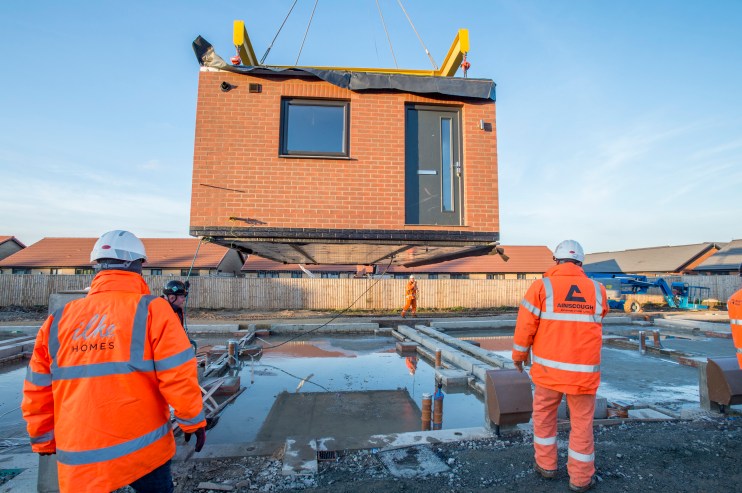Modular housing: Four common buyers’ questions answered

Modular housing; off-site construction; MMC.
You might have seen these terms bandied about by the housing minister, or heard the news earlier this month that a 49-storey modular housing tower has been approved in Croydon, which will be one of the tallest in the world. But what does it all mean?
Broadly, MMC – or modern methods of construction – refers to new and innovative ways of creating homes. This includes off-site manufacturing, where timber or steel frames are created in a factory and then delivered to a construction site, or modular housing where parts of homes, or entire homes, are pre-built and carried to site on the back of a lorry.
The next evolution of this is airspace development, where modular homes are created on top of existing residential or commercial buildings.
If you’re buying a home, you might come across some of these on your search. Here’s what you need to know.
Are they robust?
Yes, in short. A controlled factory environment is highly conducive to delivering a quality, long-lasting product – think of it like an automotive production line where accurate cuts and precision come as standard.
Modular housing can also mean homes being built more quickly, as different parts can be built simultaneously, and there is less chance of running into the seasonal issues that plague traditional builds. You wouldn’t build a car outside, so why build a home there?
Are they eco-friendly?
Modular homes are usually made primarily from timber, a sustainable material that naturally absorbs carbon dioxide. As long as trees are being replanted, the supply chain is infinite.
Traditional builds are laden with concrete and cement; the production of which is responsible for around about 8 per cent of the world’s total CO2 emissions. But MMC’s accuracy means fewer wasted materials
Meanwhile, traditional builds are laden with concrete and cement; the production of which is responsible for around about 8 per cent of the world’s total CO2 emissions. MMC’s accuracy also means fewer wasted materials, while airspace developments avoid the demolition of old buildings – instead refreshing them to give them a new life.
Can I get a mortgage?
The speed of delivery can be beneficial when it comes to getting a mortgage. It is not uncommon for conventional developers to market their homes off-plan, yet most mortgage agreements are only valid for six months, so problems might arise if there are build delays. This is less of a concern for MMC homes.
However, as it is still relatively niche, some mortgage providers have not yet caught up and are reluctant to lend on modular housing unless they it has been built using recognised systems and with the relevant warranties, so make sure you do your research first.
You should also ensure that your new MMC-built home still has the same quality assurances and warranty as a traditional property.
Just because it might be deemed ‘non-standard’, there is no excuse for developers to cut corners. You need to be certain that your new home complies with building regulations, and is covered by a relevant warranty with the likes of the NHBC or Build-Zone.
What’s it like to live in one?
The end user probably won’t notice any difference, bar being able to move in sooner than normal, or perhaps the fact that the walls are straighter.
Timber frame walls provide better insulation than masonry, so for the consumer, that might mean lower running costs. And those buying an airspace home will also be assured of great views given the nature of the build. Onwards and upwards!
Parul Scampion is chief operating officer of property developer, Fruition Properties.